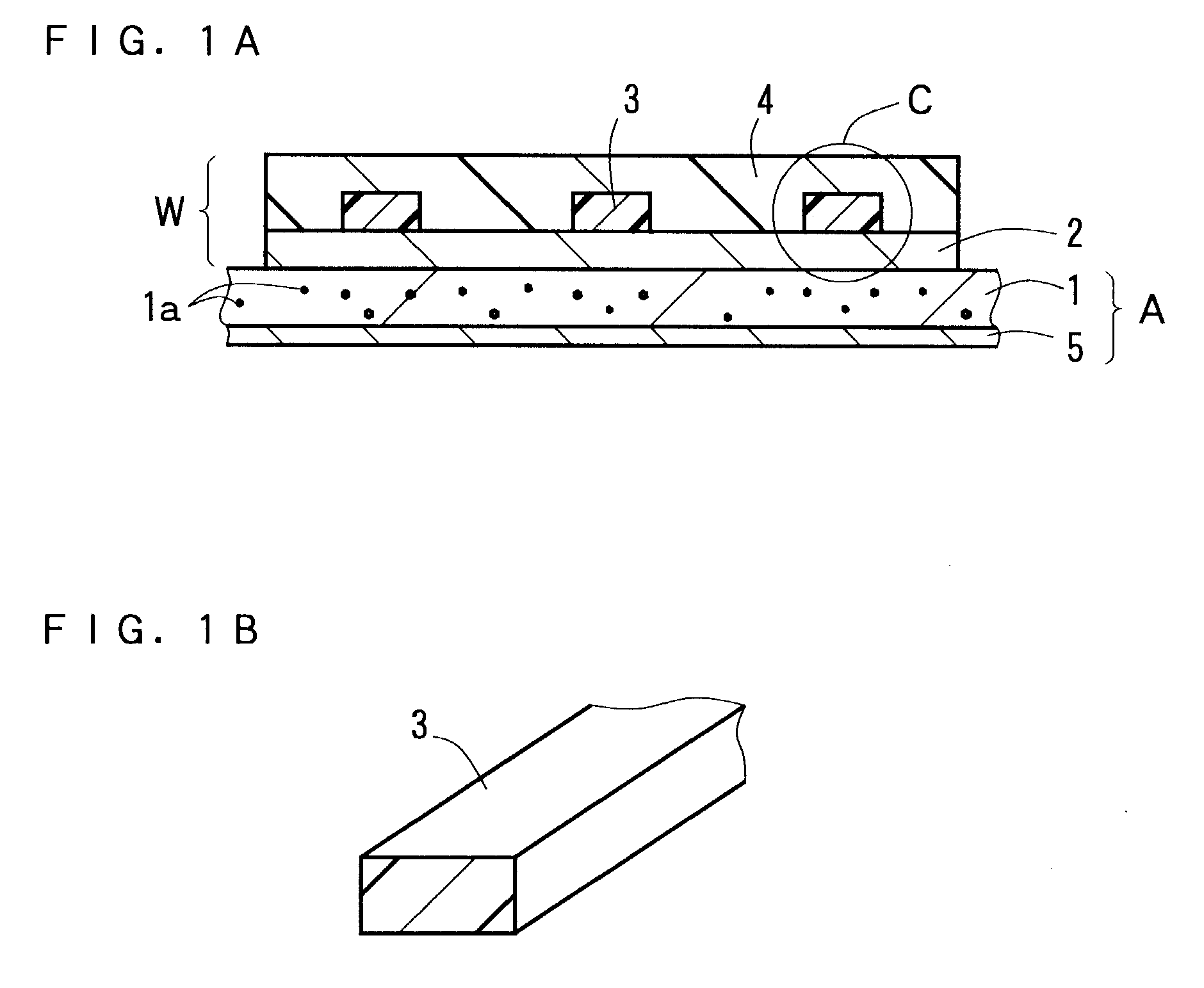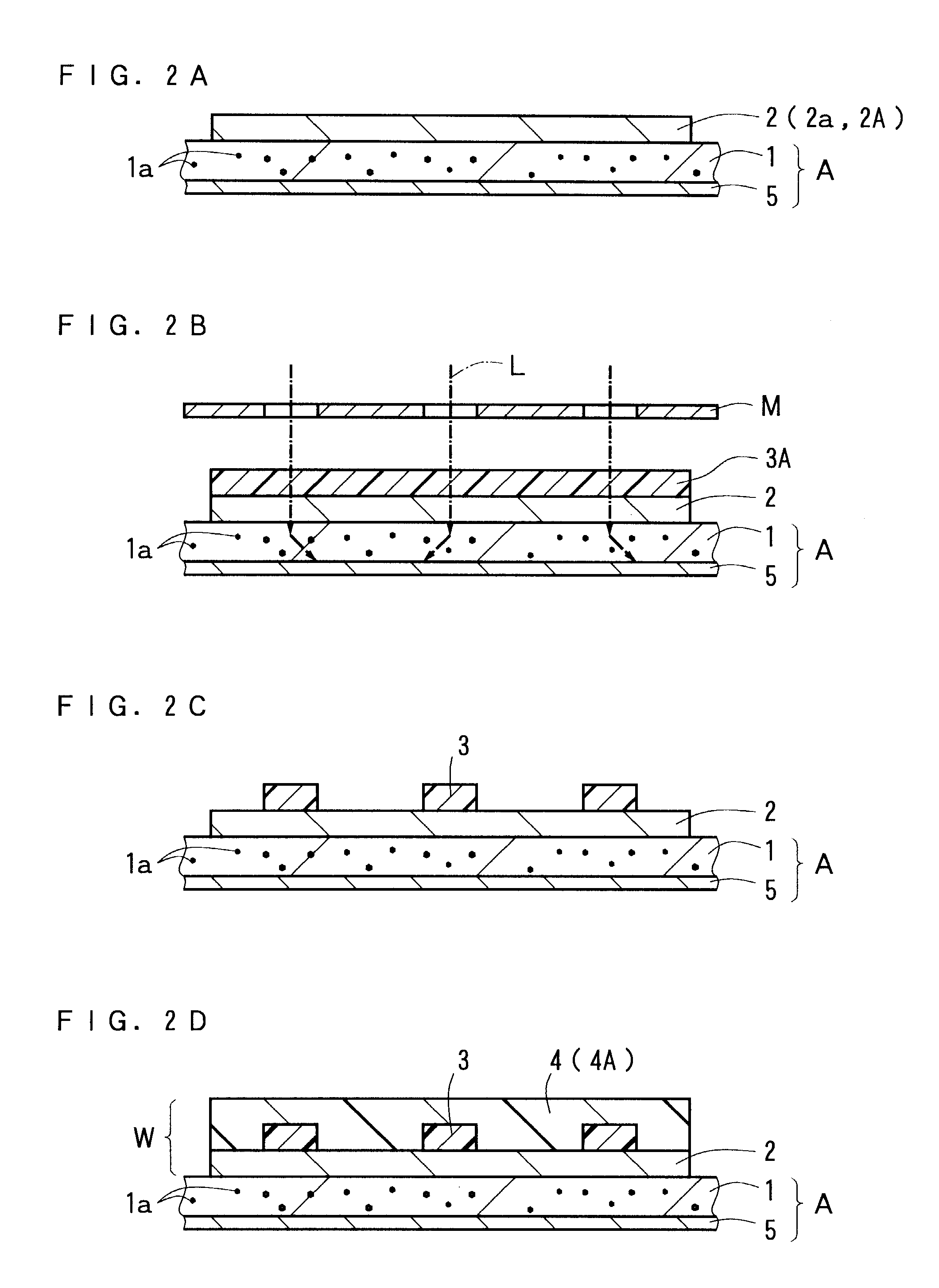Manufacturing method of optical waveguide device and optical waveguide device obtained thereby
a technology of optical waveguide and manufacturing method, which is applied in the direction of optical waveguide light guide, instruments, photomechanical treatment, etc., can solve the problems of increasing the propagation loss of light propagating inside the core b, b>, suppressing the surface roughening of the side surfaces, and preventing the increase in the total thickness of the optical waveguide device
- Summary
- Abstract
- Description
- Claims
- Application Information
AI Technical Summary
Benefits of technology
Problems solved by technology
Method used
Image
Examples
##ventive example 1
INVENTIVE EXAMPLE 1
Colored-Layer-Coated PET Substrate
[0045]A colorless transparent PET substrate (manufactured by Toray Industries, Inc., Type T60, under the product designation 188, and having a thickness of 188 μm) was prepared. Then, black alcohol-based ink was applied to one surface (the back surface) of the PET substrate by using an oil-based marking pen to form a colored layer having a thickness of 50 nm.
Material for Formation of Under Cladding Layer and Over Cladding Layer
[0046]A material for formation of an under cladding layer and an over cladding layer was prepared by mixing 35 parts by weight of bisphenoxyethanol fluorene glycidyl ether (component A) represented by the following general formula (1), 40 parts by weight of 3′,4′-epoxycyclohexyl methyl-3,4-epoxycyclohexane carboxylate which is an alicyclic epoxy resin (CELLOXIDE 2021P manufactured by Daicel Chemical Industries, Ltd.) (component B), 25 parts by weight of (3′4′-epoxycyclohexane)methyl-3′,4′-epoxycyclohexyl-car...
##ventive example 2
INVENTIVE EXAMPLE 2
[0052]An optical waveguide device was manufactured by forming the under cladding layer, the cores and the over cladding layer directly on the front surface of a black transparent colored PET substrate (manufactured by Mitsubishi Plastics, Inc., Type Z608E, under the product designation U07-17 MB, and having a thickness of 25 μm) in a manner similar to that in Inventive Example 1 described above.
PUM
 Login to View More
Login to View More Abstract
Description
Claims
Application Information
 Login to View More
Login to View More - R&D
- Intellectual Property
- Life Sciences
- Materials
- Tech Scout
- Unparalleled Data Quality
- Higher Quality Content
- 60% Fewer Hallucinations
Browse by: Latest US Patents, China's latest patents, Technical Efficacy Thesaurus, Application Domain, Technology Topic, Popular Technical Reports.
© 2025 PatSnap. All rights reserved.Legal|Privacy policy|Modern Slavery Act Transparency Statement|Sitemap|About US| Contact US: help@patsnap.com



